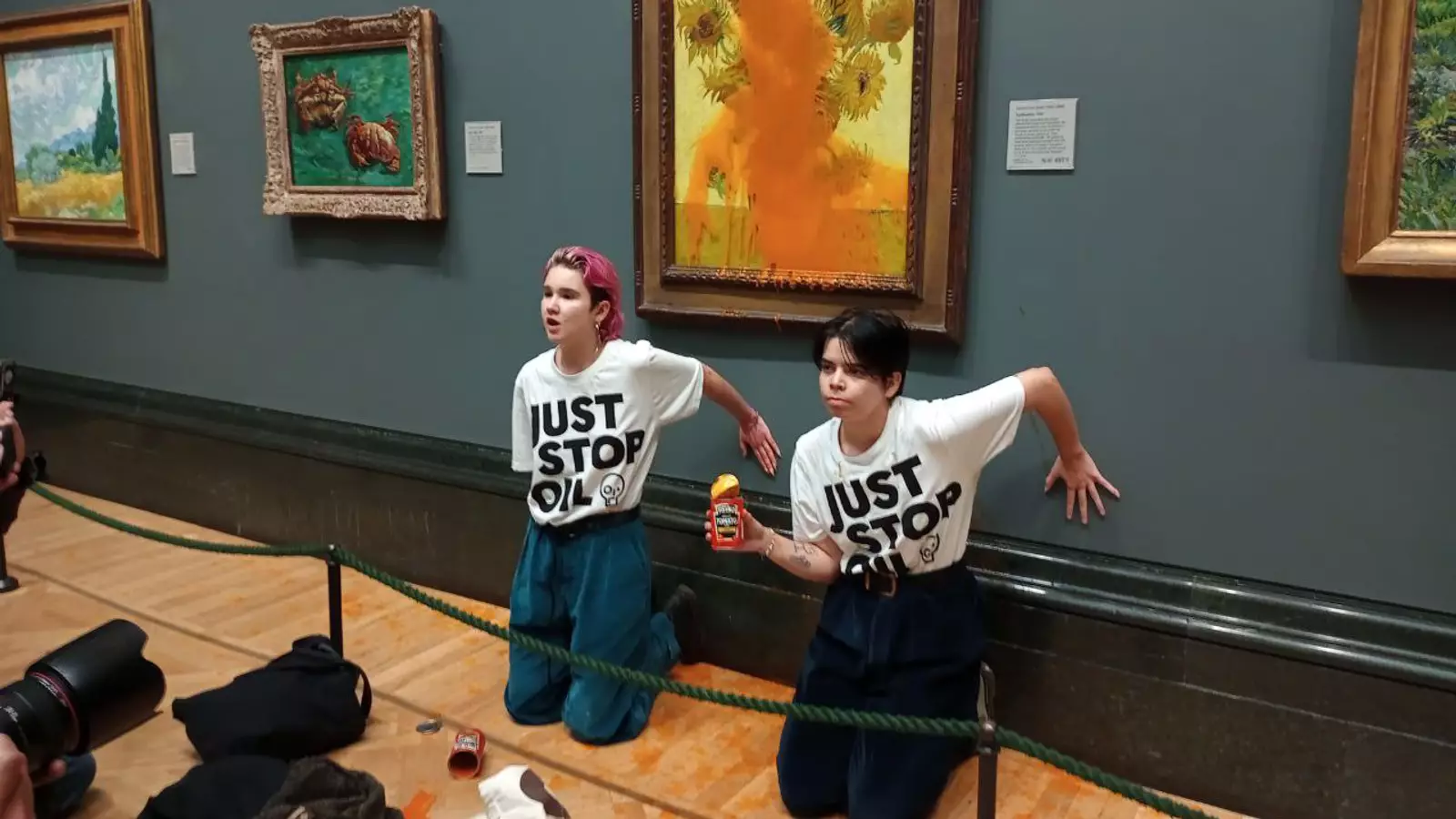In an alarming series of events, prominent art institutions, particularly the National Gallery in London, have found themselves grappling with the repercussions of activist protests. These protests, primarily orchestrated by environmental advocacy groups, have led to direct attacks on notable artworks within the gallery. The situation escalated significantly beginning in July 2022, culminating with multiple incidents aimed at masterpieces, including Vincent van Gogh’s iconic work, “Sunflowers.” These attacks not only threaten the physical integrity of the art but also disrupt the cultural experience intended for visitors.
In light of the repeated assaults on its collection, the National Gallery has introduced stringent measures aimed at preserving the safety of both its artworks and its visitors. Effective immediately, the gallery has enforced a ban on liquids within its premises, with exceptions made only for baby formula, expressed breast milk, and necessary prescription medications. This prohibition underscores the urgency of the gallery’s response to protect its invaluable collection, highlighting a paradigm shift driven by the necessity of security over accessibility.
Moreover, the National Gallery has called for visitors to limit their belongings, discouraging the carrying of large bags. While these measures may prove inconvenient for some guests, they reflect the current climate within cultural institutions where security takes precedence. The gallery’s statement illustrates the difficult position in which institutions find themselves; they must balance the enjoyment of art with the safeguarding of their treasures.
The distressing nature of these incidents cannot be understated. They have produced not only physical damage—evidenced by the shattered frames and monetary losses estimated in the tens of thousands of pounds—but they have also caused significant emotional turmoil among visitors and staff. The gallery has made it clear that such actions hinder its fundamental mission: making art accessible and enjoyable for a diverse audience.
In the wake of the attacks, operations at the gallery will likely experience delays due to increased security protocols. The implementation of walk-through metal detectors and routine inspections of bags may not only slow down the admission process but could also alter the overall visitor experience. As patrons adjust to these additional layers of security, the gallery’s management must find innovative ways to maintain an inviting atmosphere for art lovers.
The tension between activism and the preservation of cherished artworks continues to raise poignant questions regarding the role of protest in contemporary society. On one hand, activists aim to draw attention to pressing global issues such as climate change, while on the other, they risk alienating the very audiences they seek to reach. The gallery stands at a crossroads, challenged to protect its collection while also recognizing the underlying motivations of the activists.
As the conversation surrounding activism and art preservation unfolds, it serves as a reminder of the complex relationship between art institutions and societal issues. Moving forward, both artists and activists may need to find mutually beneficial paths that respect the integrity of art while advocating for necessary change. In an age where culture often intersects with activism, finding that balance will be critical for safeguarding the future of artistic expression.

Leave a Reply